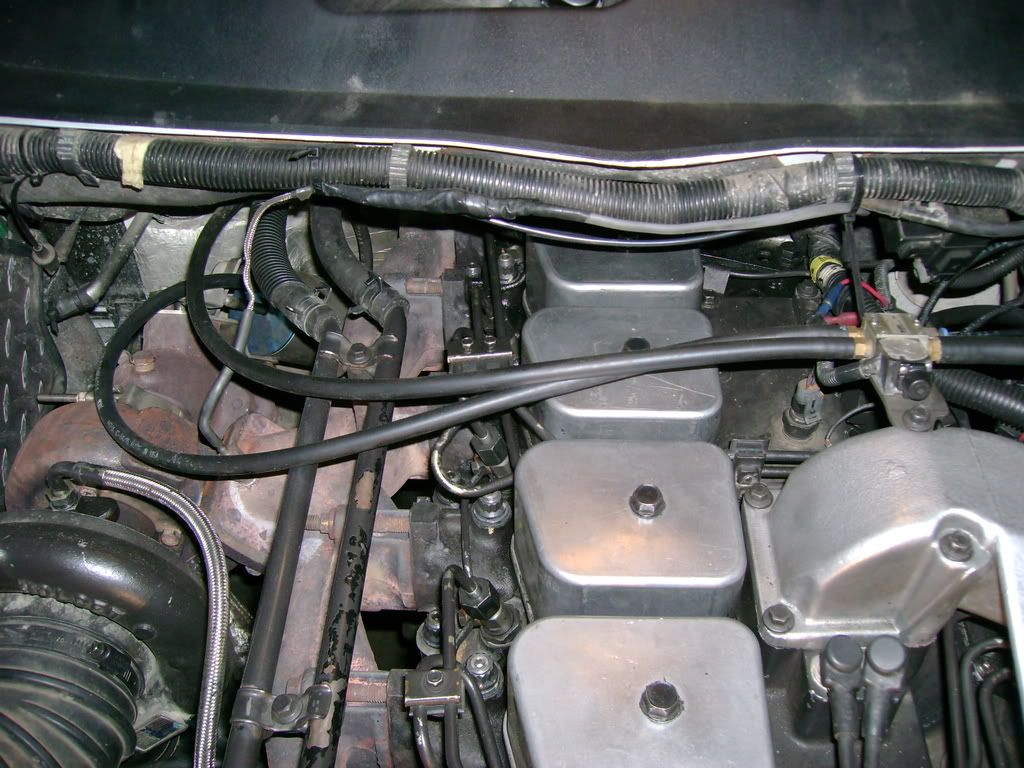- Joined
- Jan 22, 2007
- Messages
- 32,023
Exhaust brakes are cool. Exhaust brakes are expensive. Exhaust brakes are nothing more than a flapper with some fancy controls. So, here's my thoughts and questions.
The build:
A short stub of pipe with a pin through it and a flap. (highly techinical junk)
A two speed type switch mounted to the shifter like my class 6 trucks.
A solinoid valve off the vacuum line. Flip the switch, it pulls the flap closed. Flip it back, it opens.
Simple huh?
The questions:
How much backpressure is too much? Can I put a pressure sensor right before the device and monitor the pressure and tune it so it won't close off too much? I know some drill a hole through the flap. Is there any type of PSI limit as to what would hurt the turbine or motor if closed off too much?
How fast do they normally move? If I use vacuum, they will move slowly I'm guessing. What if I used a coil type plunger that would slam it shut and return by spring once power was removed? Can I close it to fast?
How much force does it take to close the device? I'm certain there is a lot of variables here. RPM, CFM, etc will all play a part in this. Ease of closing can be helped by a longer lever on the pivot and as the brake works, the CFM drops, the more closed it will become.
Does anyone have any first hand knowledge of any of the questions I have posted here? I'd be grateful for some input. I do have a line on a air operated one pretty cheap....but don't really want to install a compressor.
As usual..I think to myself "it can't be that hard. I can make one"...which will normally turn into "I never had time to finish it".
The build:
A short stub of pipe with a pin through it and a flap. (highly techinical junk)
A two speed type switch mounted to the shifter like my class 6 trucks.
A solinoid valve off the vacuum line. Flip the switch, it pulls the flap closed. Flip it back, it opens.
Simple huh?
The questions:
How much backpressure is too much? Can I put a pressure sensor right before the device and monitor the pressure and tune it so it won't close off too much? I know some drill a hole through the flap. Is there any type of PSI limit as to what would hurt the turbine or motor if closed off too much?
How fast do they normally move? If I use vacuum, they will move slowly I'm guessing. What if I used a coil type plunger that would slam it shut and return by spring once power was removed? Can I close it to fast?
How much force does it take to close the device? I'm certain there is a lot of variables here. RPM, CFM, etc will all play a part in this. Ease of closing can be helped by a longer lever on the pivot and as the brake works, the CFM drops, the more closed it will become.
Does anyone have any first hand knowledge of any of the questions I have posted here? I'd be grateful for some input. I do have a line on a air operated one pretty cheap....but don't really want to install a compressor.
As usual..I think to myself "it can't be that hard. I can make one"...which will normally turn into "I never had time to finish it".



